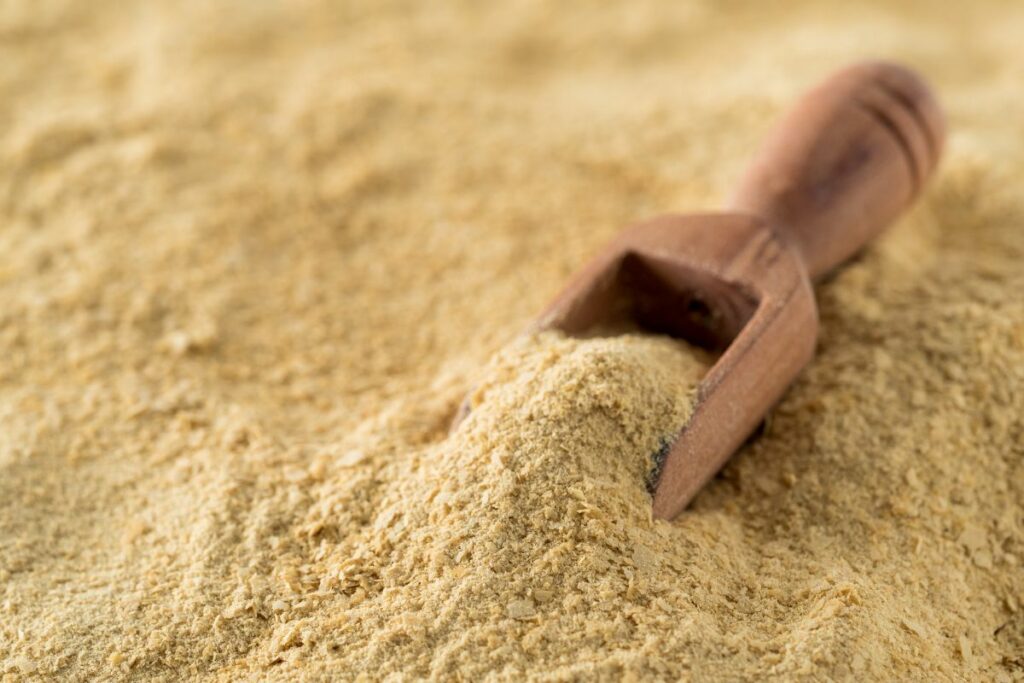Baking with yeast is a common practice in many households, but what do you do when you don’t have any yeast on hand? Luckily, there are several yeast substitutes that can be used to achieve similar results. A yeast substitute chart can be a helpful tool in the kitchen, providing guidance on which substitutes to use and how to use them.
One popular yeast substitute is baking powder, which is a staple ingredient in most kitchens. Baking powder contains baking soda and an acid, usually cream of tartar, and acts as a leavening agent. When used in place of yeast, baking powder can help dough rise and achieve a light and fluffy texture. Another option is using a combination of baking soda and an acidic ingredient, such as lemon juice or vinegar, which can also create carbon dioxide and help dough rise.
A yeast substitute chart can also be useful for those with dietary restrictions or preferences. For example, individuals who follow a vegan or dairy-free diet may prefer to use substitutes such as applesauce or mashed bananas, which can add moisture and sweetness to baked goods. Additionally, using sourdough starter or kefir can add a tangy flavor to bread and provide natural yeast for rising. Overall, a yeast substitute chart can help bakers experiment with different ingredients and achieve delicious results without relying on traditional yeast.
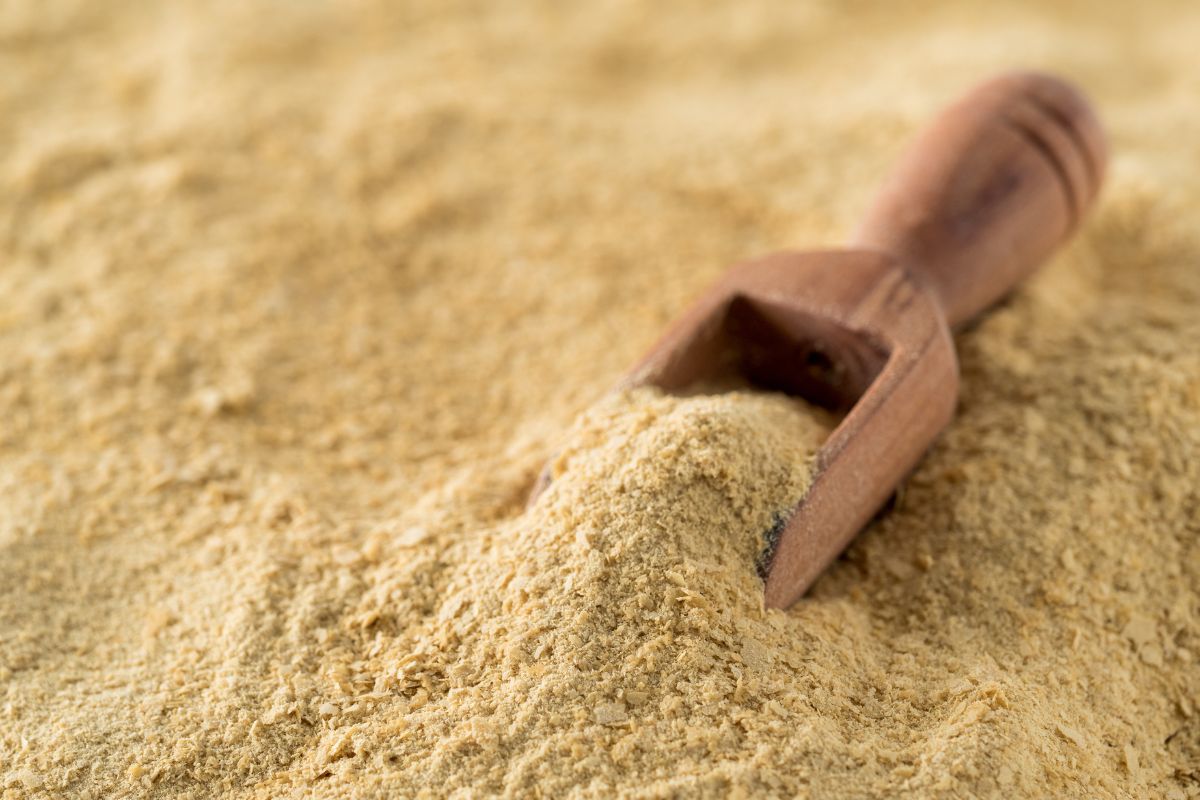
Contents
Understanding Yeast
Yeast is a single-celled microorganism that is used in baking and brewing. It is a key ingredient that helps dough rise and gives bread its texture. Yeast is also used in the production of beer, wine, and other fermented beverages.
There are three main types of yeast used in baking: Active Dry Yeast, Instant Yeast, and Fresh Yeast. Each type of yeast has its own unique characteristics and is used in different ways.
Active Dry Yeast
Active Dry Yeast is the most commonly used type of yeast in baking. It is made up of dehydrated granules that must be dissolved in water before use. This process is called “proofing” and allows the yeast to activate and start producing carbon dioxide, which causes the dough to rise.
Active Dry Yeast has a longer shelf life than Fresh Yeast and is more convenient to use than Instant Yeast. However, it takes longer to activate than Instant Yeast and may require additional proofing time.
Instant Yeast
Instant Yeast, also known as Rapid Rise Yeast, is a type of yeast that does not need to be proofed before use. It is made up of smaller granules that dissolve quickly and activate faster than Active Dry Yeast.
Instant Yeast is more convenient to use than Active Dry Yeast and is often preferred by professional bakers. However, it has a shorter shelf life than Active Dry Yeast and may not be as readily available in stores.
Fresh Yeast
Fresh Yeast, also known as Cake Yeast or Compressed Yeast, is a type of yeast that is sold in a solid block or cake form. It has a shorter shelf life than Active Dry Yeast and must be stored in the refrigerator or freezer.
Fresh Yeast is more perishable than other types of yeast but is considered to be the most flavorful and effective type of yeast for baking. It is often used in artisanal bread baking and is preferred by many professional bakers.

In conclusion, understanding the characteristics and differences of each type of yeast is important in baking. Active Dry Yeast, Instant Yeast, and Fresh Yeast all have their own unique qualities and are used in different ways. By selecting the right type of yeast for their recipe, bakers can achieve the desired texture and flavor in their baked goods.
The Role of Yeast in Baking
Yeast is a crucial ingredient in baking, particularly for bread, as it helps the dough rise and gives it a fluffy texture. It is a single-celled organism that feeds on sugar, producing carbon dioxide gas and alcohol as byproducts. The carbon dioxide gas gets trapped in the dough, causing it to expand and rise, while the alcohol evaporates during baking.
Rise and Texture
Yeast is responsible for the rise and texture of bread, as it creates air pockets in the dough during the fermentation process. The air pockets give the bread a light, fluffy texture, while the fermentation process also helps to develop the flavor of the bread.
Different types of yeast produce different textures in bread. For example, instant yeast produces a finer crumb structure and a softer texture, while active dry yeast produces larger air pockets and a chewier texture.
Flavor
Yeast also plays a significant role in the flavor of bread. During the fermentation process, the yeast consumes sugar and produces carbon dioxide gas and alcohol. The alcohol evaporates during baking, leaving behind a complex flavor profile in the bread.
The type of yeast used can also affect the flavor of the bread. For example, sourdough bread is made with a natural yeast starter, which gives it a distinct tangy flavor.
In summary, yeast is a crucial ingredient in baking, particularly for bread. It helps the dough rise and gives it a fluffy texture, while also contributing to the flavor of the bread. The type of yeast used can affect the texture and flavor of the bread, making it essential to choose the right yeast for the desired outcome.
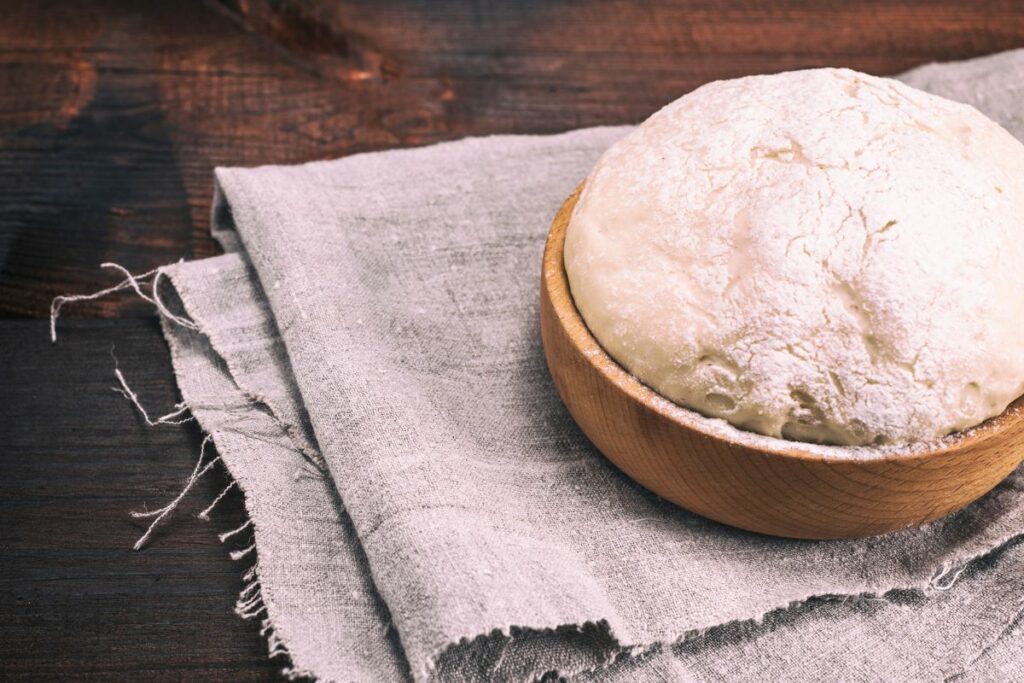
Common Yeast Substitutes
If you’re out of yeast or can’t find the specific yeast strain called for in a recipe, don’t worry! There are several common substitutes that can be used instead. Here are three popular yeast substitutes:
Baking Powder
Baking powder is a common leavening agent used in baking. It contains baking soda and an acid, usually cream of tartar, which reacts with liquid to produce carbon dioxide gas. This gas causes the dough or batter to rise.
To substitute yeast with baking powder, use 1 teaspoon of baking powder for every 1 cup of flour. However, keep in mind that baking powder may not work as well as yeast in recipes that require a lot of rising, such as bread.
Baking Soda
Baking soda is another popular leavening agent that can be used as a yeast substitute. It’s an alkaline substance that reacts with acid to produce carbon dioxide gas, which causes the dough or batter to rise.
To substitute yeast with baking soda, use 1/4 teaspoon of baking soda for every 1 cup of flour. However, keep in mind that baking soda may not work as well as yeast in recipes that require a lot of rising, such as bread.
Sourdough Starter
Sourdough starter is a mixture of flour and water that has been fermented by wild yeast and bacteria. It’s commonly used in sourdough bread recipes, but can also be used as a yeast substitute in other baked goods.
To substitute yeast with sourdough starter, use 1 cup of sourdough starter for every 1 cup of flour in the recipe. However, keep in mind that sourdough starter may not work as well as yeast in recipes that require a lot of rising, such as bread.
Overall, these common yeast substitutes can be a great option when you don’t have yeast on hand or can’t find the specific yeast strain called for in a recipe. However, keep in mind that the results may not be exactly the same as when using yeast, so be prepared to adjust the recipe as needed.
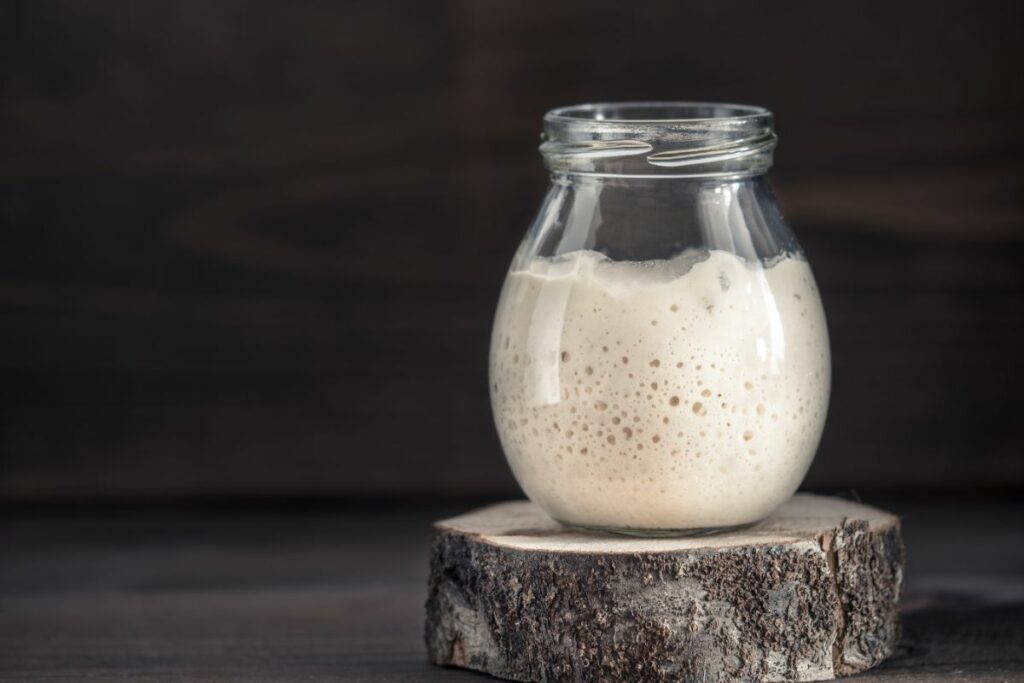
Using Acid as a Yeast Substitute
When yeast is not available, baking enthusiasts can still achieve the desired rise in their baked goods by using acid as a substitute. Acidic ingredients like lemon juice, vinegar, and cream of tartar can be used as a leavening agent in baking.
Lemon Juice
Lemon juice is an excellent substitute for yeast in baking. When combined with baking soda, it creates carbon dioxide gas, which helps the dough rise. To use lemon juice as a yeast substitute, add 1 tablespoon of lemon juice for every 1 teaspoon of baking soda.
Vinegar
Vinegar is another acidic ingredient that can be used in place of yeast. Like lemon juice, it can react with baking soda to create carbon dioxide gas. To use vinegar as a yeast substitute, mix 1 tablespoon of vinegar with 1 teaspoon of baking soda.
Cream of Tartar
Cream of tartar is a byproduct of winemaking and is often used in baking as a stabilizing agent. It is also acidic and can be used as a yeast substitute. To use cream of tartar as a yeast substitute, mix 1 1/2 teaspoons of cream of tartar with 1 teaspoon of baking soda.
When using acid as a yeast substitute, it is important to note that the dough may not rise as much as it would with yeast. Additionally, the resulting baked goods may have a slightly different taste and texture. However, acid can be a great substitute for those who are allergic to yeast or who do not have any on hand.
Other Yeast Substitutes
If you don’t have yeast on hand, there are other options you can use to make your baked goods rise. Here are some substitutes you can try:
Buttermilk
Buttermilk is a great substitute for yeast in recipes that call for a tangy flavor. It is also a great substitute for recipes that need a leavening agent. Buttermilk is acidic, which helps activate baking soda and baking powder, making it a great option for recipes that require a leavening agent.
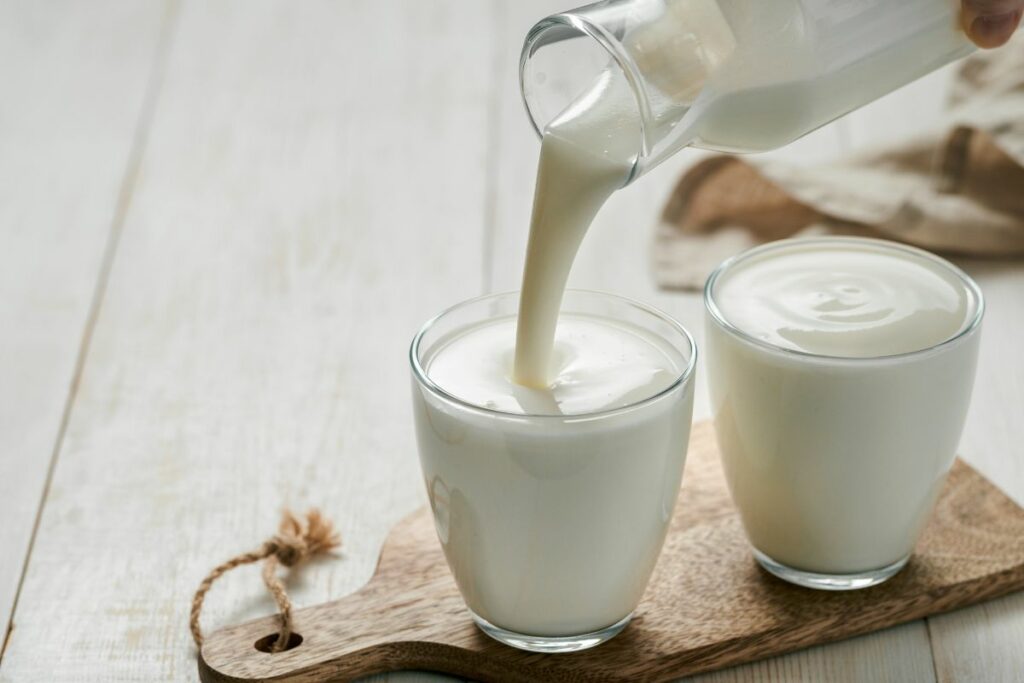
Milk
Milk is another option that can be used as a yeast substitute. It can be used in recipes that require a leavening agent. Milk can be used to activate baking soda or baking powder, which will help your baked goods rise. It is important to note that milk is not acidic like buttermilk, so it may not work as well in some recipes.
Beer
Beer is a great yeast substitute for recipes that require a leavening agent and a unique flavor. Beer can be used to activate baking soda or baking powder, which will help your baked goods rise. It is important to note that beer can add a distinct flavor to your recipe, so it may not be the best option for all recipes.
Overall, there are many yeast substitutes you can use in your recipes. Buttermilk, milk, and beer are just a few options to consider. When substituting yeast, it is important to keep in mind the recipe’s requirements and the flavor profile you are trying to achieve.
Specific Yeast Strains
WLP001
WLP001 is a popular yeast strain used by homebrewers and craft breweries alike. This strain is known for its clean and neutral flavor profile, making it a versatile option for a wide range of beer styles. It is a great substitute for other American ale yeast strains, such as Wyeast 1056 and Safale US-05.
BRY-97
BRY-97 is a dry yeast strain that is known for its high attenuation and clean flavor profile. It is a great option for brewing American-style ales, and is often used as a substitute for Wyeast 1056 and WLP001.
Cali
Cali is a popular yeast strain that is commonly used in brewing California-style ales. It is known for its clean and crisp flavor profile, and is a great substitute for other American ale yeast strains, such as Wyeast 1056 and WLP001.

WLP007
WLP007 is a yeast strain that is known for its high attenuation and clean flavor profile. It is a great option for brewing English-style ales, and is often used as a substitute for Wyeast 1098 and WLP002.
WLP820
WLP820 is a yeast strain that is commonly used in brewing German-style lagers. It is known for its clean and crisp flavor profile, and is a great substitute for other German lager yeast strains, such as Wyeast 2124 and Saflager W-34/70.
German
German yeast strains are known for their clean and crisp flavor profiles, and are commonly used in brewing German-style beers. Some popular German yeast strains include WLP830, WLP300, and WLP380.
WB-06
WB-06 is a dry yeast strain that is commonly used in brewing German-style wheat beers. It is known for its banana and clove flavors, and is a great substitute for other wheat beer yeast strains, such as Wyeast 3068 and WLP300.
House
House yeast strains are often unique to individual breweries, and are used to give their beers a distinct flavor profile. Some popular house yeast strains include WLP320 (White Labs), WLP013 (White Labs), and WLP004 (White Labs).
WLP005
WLP005 is a yeast strain that is commonly used in brewing English-style ales. It is known for its clean and crisp flavor profile, and is a great substitute for other English ale yeast strains, such as Wyeast 1968 and WLP002.

WLP051
WLP051 is a yeast strain that is commonly used in brewing Belgian-style ales. It is known for its spicy and fruity flavor profile, and is a great substitute for other Belgian ale yeast strains, such as Wyeast 1214 and WLP550.
WLP023
WLP023 is a yeast strain that is commonly used in brewing Scottish-style ales. It is known for its malty and slightly sweet flavor profile, and is a great substitute for other Scottish ale yeast strains, such as Wyeast 1728 and WLP028.
German Lager
German lager yeast strains are known for their clean and crisp flavor profiles, and are commonly used in brewing German-style lagers. Some popular German lager yeast strains include WLP820, Wyeast 2124, and Saflager W-34/70.
Wyeast
Wyeast is a popular brand of liquid yeast that is used by homebrewers and craft breweries alike. Some popular Wyeast strains include 1056 (American Ale), 1098 (British Ale), and 2124 (Bohemian Lager).
Irish Ale Yeast
Irish ale yeast strains are known for their malty and slightly sweet flavor profiles, and are commonly used in brewing Irish-style ales. Some popular Irish ale yeast strains include Wyeast 1084 and WLP004.
Belgian Ale Yeast
Belgian ale yeast strains are known for their spicy and fruity flavor profiles, and are commonly used in brewing Belgian-style ales. Some popular Belgian ale yeast strains include Wyeast 1214 and WLP550.
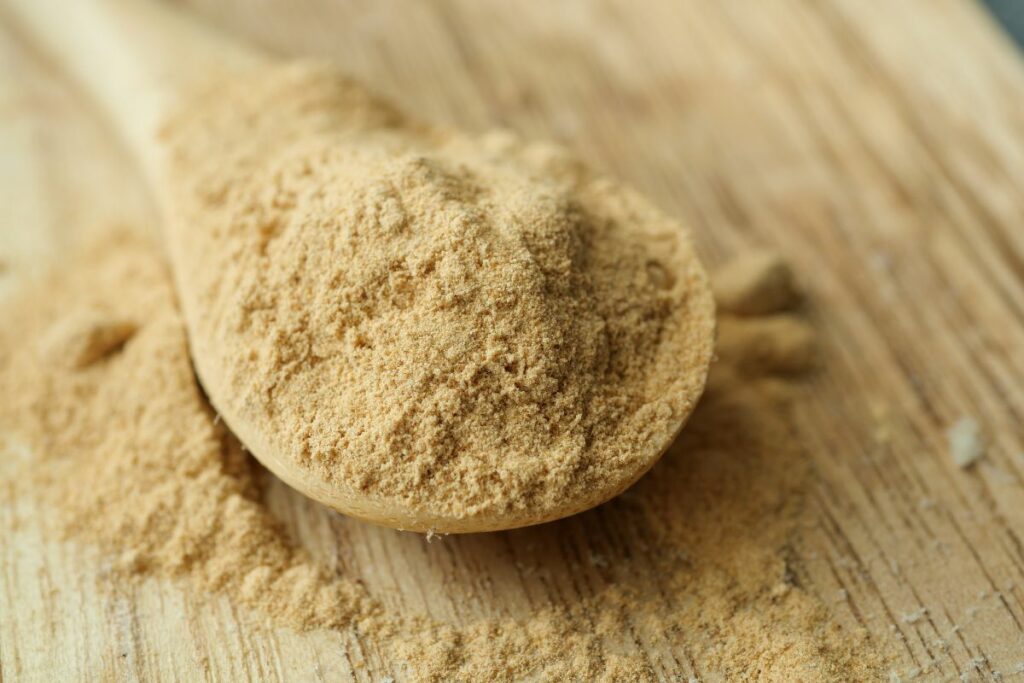
US-05
US-05 is a dry yeast strain that is known for its clean and neutral flavor profile. It is a great option for brewing American-style ales, and is often used as a substitute for Wyeast 1056 and WLP001.
A07
A07 is a yeast strain that is commonly used in brewing Belgian-style saisons. It is known for its spicy and fruity flavor profile, and is a great substitute for other saison yeast strains, such as Wyeast 3724 and WLP565.
S-04
S-04 yeast is a strain of ale yeast commonly used in the production of English-style ales. It is known for its ability to ferment at cooler temperatures and produce a clean, crisp flavor profile with low levels of esters and phenols.
Recipes Using Yeast Substitutes
If you don’t have yeast on hand, don’t worry! There are several substitutes you can use to make delicious baked goods. Here are some recipes using yeast substitutes that you can try at home.
Bread Recipes
Bread is a staple in many households, and it’s easy to make with yeast substitutes. The following recipe uses buttermilk and baking powder instead of yeast.
Buttermilk Bread
Ingredients:
- 3 cups all-purpose flour
- 1 tablespoon sugar
- 1 tablespoon baking powder
- 1 teaspoon salt
- 1 1/2 cups buttermilk
- 1/4 cup vegetable oil
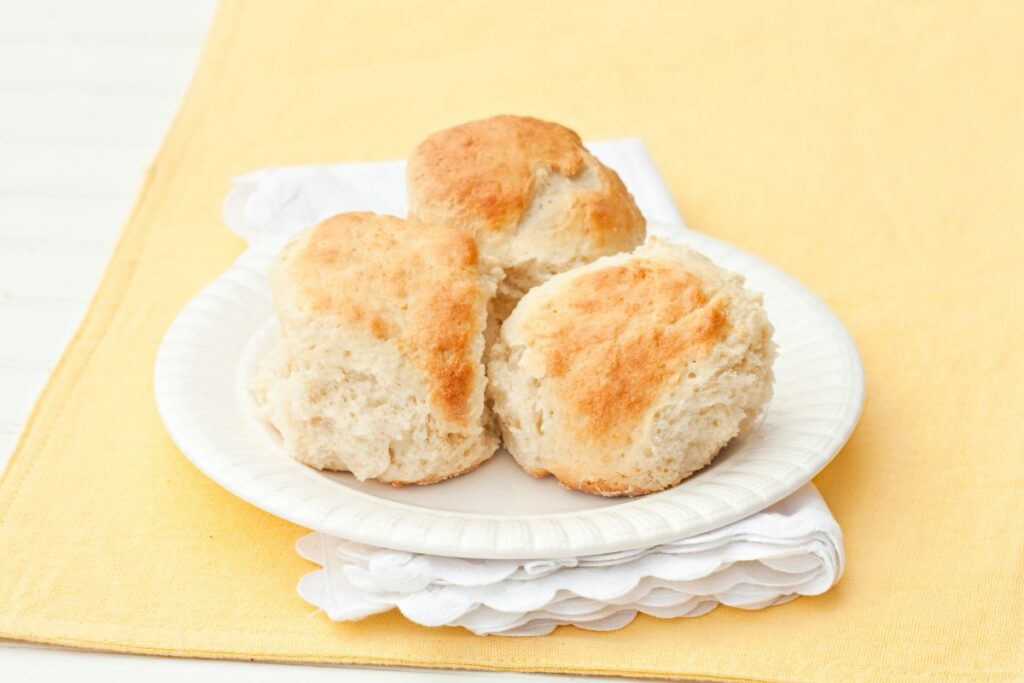
Instructions:
- Preheat the oven to 375°F.
- In a large bowl, whisk together the flour, sugar, baking powder, and salt.
- In a separate bowl, mix together the buttermilk and vegetable oil.
- Add the wet ingredients to the dry ingredients and stir until just combined.
- Pour the dough into a greased loaf pan and bake for 45-50 minutes, or until a toothpick inserted into the center comes out clean.
- Let the bread cool in the pan for 10 minutes, then transfer to a wire rack to cool completely.
Pizza Dough
Pizza dough is another recipe that typically calls for yeast, but you can use a yeast substitute to make a delicious crust. The following recipe uses a combination of baking powder and lemon juice.
Pizza Dough
Ingredients:
- 2 cups all-purpose flour
- 1 tablespoon baking powder
- 1 teaspoon salt
- 1/2 teaspoon garlic powder
- 1/2 teaspoon onion powder
- 1/2 teaspoon dried oregano
- 1/2 teaspoon dried basil
- 1/2 teaspoon lemon juice
- 3/4 cup water
- 1/4 cup olive oil
Instructions:
- Preheat the oven to 425°F.
- In a large bowl, whisk together the flour, baking powder, salt, garlic powder, onion powder, oregano, and basil.
- In a separate bowl, mix together the lemon juice, water, and olive oil.
- Add the wet ingredients to the dry ingredients and stir until a dough forms.
- Knead the dough for a few minutes, then roll it out onto a greased pizza pan.
- Add your favorite toppings and bake for 15-20 minutes, or until the crust is golden brown.

Quick Bread
Quick bread is a type of bread that doesn’t require yeast, making it a perfect recipe to use a yeast substitute. The following recipe uses baking soda and lemon juice.
Lemon Poppy Seed Bread
Ingredients:
- 2 cups all-purpose flour
- 1/2 cup sugar
- 1 tablespoon baking powder
- 1/2 teaspoon salt
- 1 tablespoon lemon zest
- 2 tablespoons poppy seeds
- 1/2 cup vegetable oil
- 3/4 cup milk
- 2 tablespoons lemon juice
- 2 eggs
Instructions:
- Preheat the oven to 350°F.
- In a large bowl, whisk together the flour, sugar, baking powder, salt, lemon zest, and poppy seeds.
- In a separate bowl, mix together the vegetable oil, milk, lemon juice, and eggs.
- Add the wet ingredients to the dry ingredients and stir until just combined.
- Pour the batter into a greased loaf pan and bake for 45-50 minutes, or until a toothpick inserted into the center comes out clean.
- Let the bread cool in the pan for 10 minutes, then transfer to a wire rack to cool completely.
Now that you have some delicious recipes using yeast substitutes, you can enjoy freshly baked bread, pizza, and quick bread anytime you want!
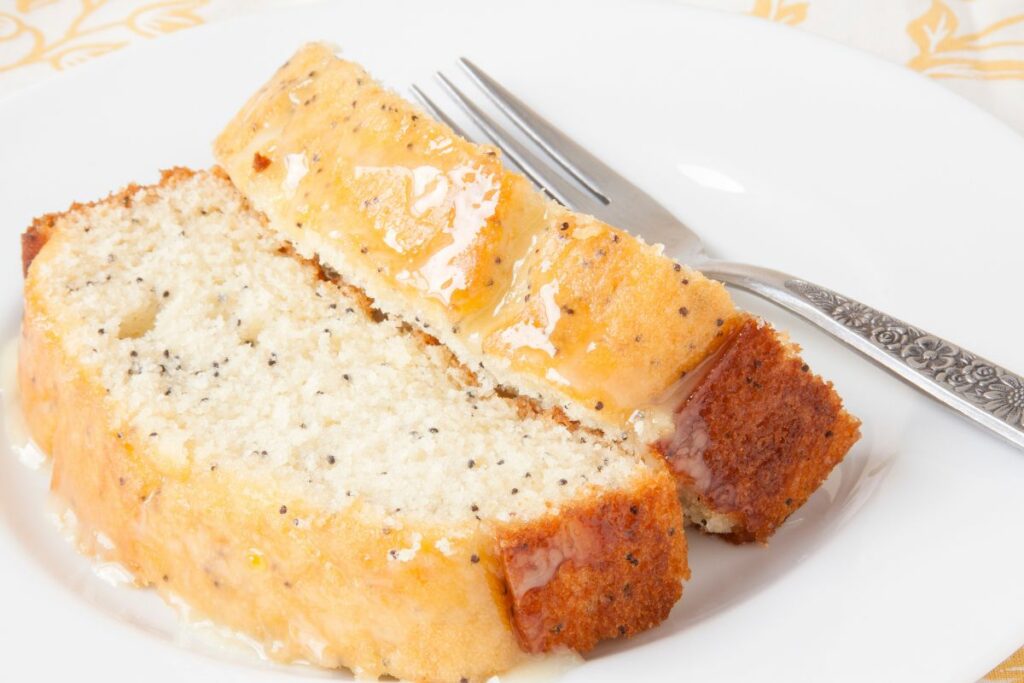
Additional Tips for Using Yeast Substitutes
When using yeast substitutes, it is important to keep in mind that the final product may differ in flavor and texture from the original recipe. Here are some additional tips to help you achieve the best results:
- Adjust the amount of substitute: The amount of yeast substitute needed may vary depending on the recipe. It is recommended to start with a smaller amount and adjust as necessary.
- Use the right leavening agent: Yeast substitutes are not the only leavening agents available. Baking powder and baking soda can also be used to help baked goods rise. However, it is important to use the right leavening agent for the recipe to achieve the desired texture.
- Be mindful of rising time: When using yeast substitutes, the rising time may be shorter than when using yeast. Keep an eye on the dough or batter and be ready to move on to the next step once it has risen sufficiently.
- Experiment with flavors: Yeast substitutes may not provide the same flavor as yeast. However, this can be an opportunity to experiment with different flavors. For example, adding herbs or spices to the dough or batter can add a unique flavor to the final product.
- Consider the texture: Yeast substitutes may not provide the same texture as yeast. For example, using baking powder instead of yeast may result in a denser texture. Consider the desired texture of the final product when choosing a yeast substitute.
By keeping these tips in mind, you can successfully use yeast substitutes in your baking and achieve delicious results.
